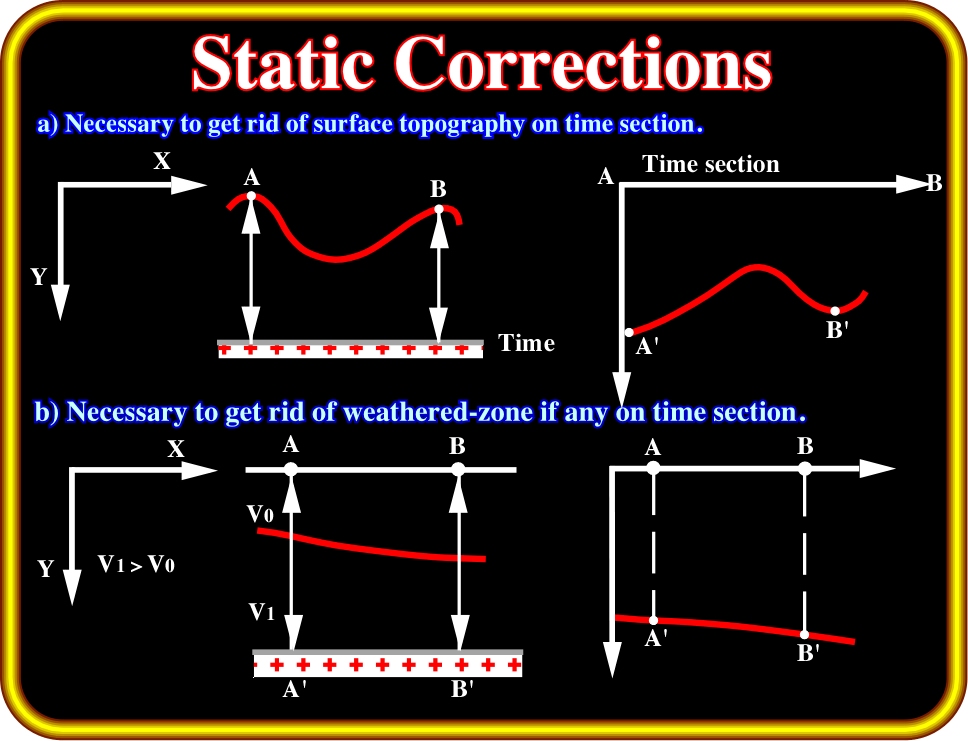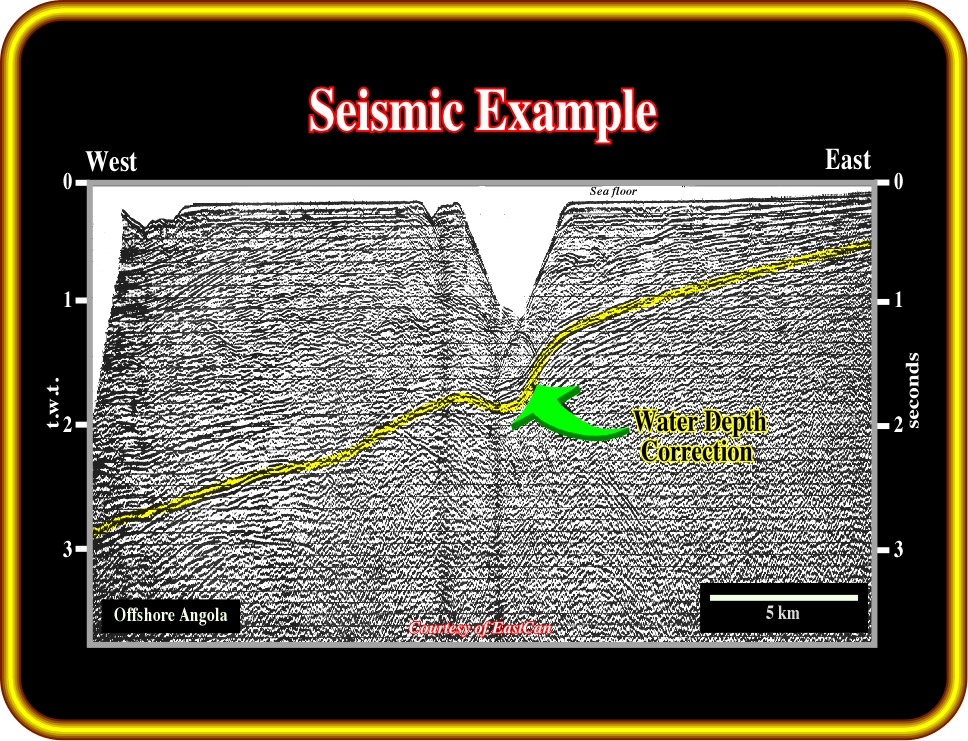
Universidade Fernando Pessoa
Porto, Portugal

Seismic-Sequential Stratigraphy
Reflection times on seismic traces, recorded on land, have to be corrected for time differences introduced by near-surface irregularities. These irregularities have the effect of shifting reflection events on adjacent traces out of their true time relationships. The two major sources of irregularity are:
1) Elevation differences between individual shots and detectors, and
2) The presence of a weathered layer, which is a heterogeneous surface layer, a few meters to several tens of meters thick, and of abnormally low seismic velocity.
These two major sources of velocity irregularities are sketched in Plate 92.

Plate 92 - Static corrections take into account the topography and the weathered-zone as pictured above.
The static corrections are a combined weathering and elevation correction that removes the effects of low velocity surface layer and reduces all reflections to a common datum. Changes in water depth induce typical parasites, particularly on the distal parts of the seismic lines of continental platforms, and in the upper slope, where, often, submarine canyons are often carved by turbiditic currents. A sharp chang in water depth, such as illustrated in Plate 93, induces a lateral variation of the velocity interval. The seismic waves are retarded progressively deeper water and the time-traject will be longer. Hence, the associated reflections are pulled-down below the greater water depth.

Plate 93- On this seismic line, from the northern offshore Angola, located nearby the Congo river, the water-depth variation induces local pull-down of uniformly continuous reflectors. Indeed, seismic waves travel slower through water than through sediments. The pulldown of the reflectors directly below the Congo submarine canyon is evident. However, it does not have any geological meaning. In a depth section the reflectors keep the regional seaward dip recognized all along the profile.